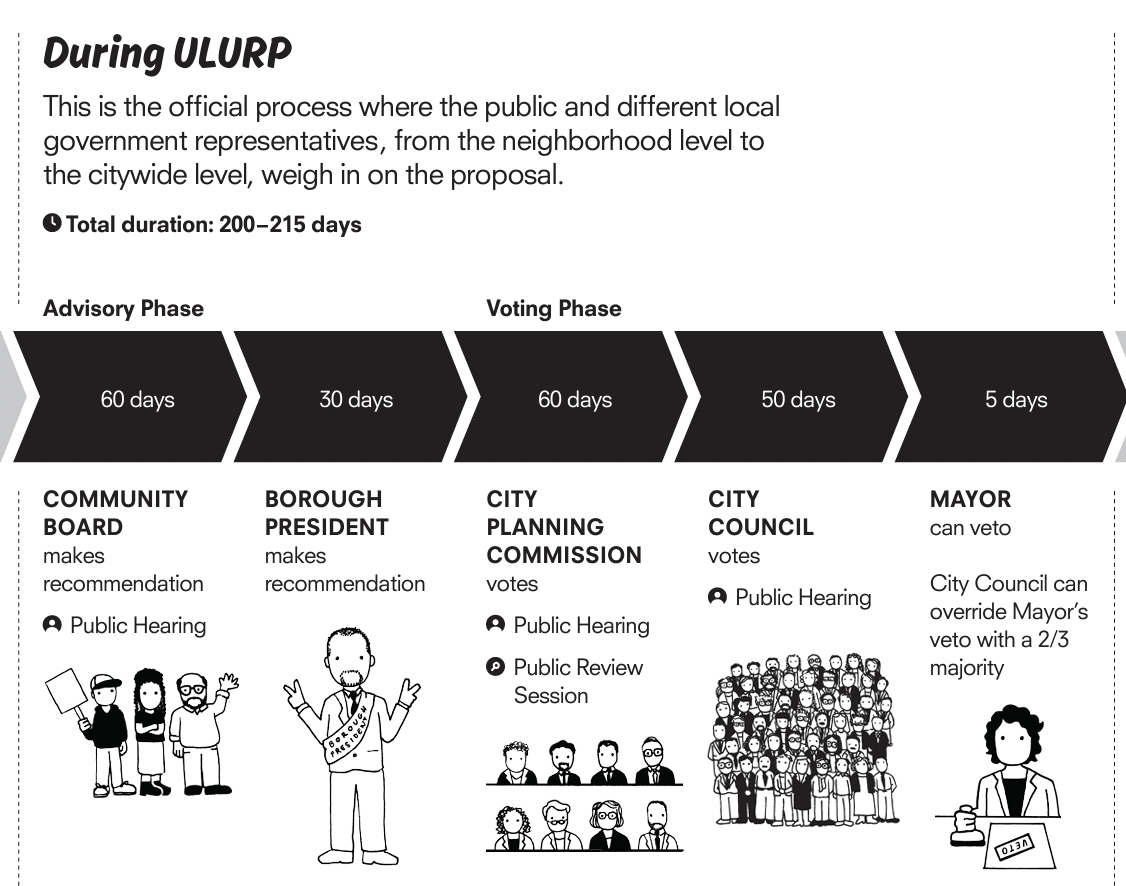When the City or a Developer Wants to Build Something More or Different Than What the Current Rules for the Property Allow
In NYC, all proposals for big land use changes have to go through a public review process called the Uniform Land Use Review Procedure (ULURP). ULURP is the process New York City uses to make sure elected officials and the public review big land-use decisions. This process is used when a developer or the City wants to change the zoning rules to build something more or different that what is currently allowed, when the City is selling public land, or when an Urban Renewal Area Plan is adopted of amened.
There are other times when this process is used, too. Read about them here on the NYC Department of City Planning website.
Part One: Environmental Review
Part of that process is a review of all the ways the proposed changes might impact the neighborhood — from traffic, to building shadows, to affordability. This review is required by the New York State Environmental Quality Review Act. The City wrote a set of its own rules to help make sure that proposals to change things in New York City follow state law. The City's rules are called the City Environmental Quality Review (CEQR); the full rules are here.
Community members can have a say in what kinds of “impacts” are considered, which is an important way to be involved in local land use decisions. There will be public hearings at two steps in the Environmental Review process: (1) when the draft scope of review is published and (2) when the draft Environmental Impact Statement (EIS) is published.
Part Two: The Procedure
ULURP is a standardized procedure for public review of land use changes, established in the City Charter. The Charter also established mandated public hearings nad time frames within which application review must take place. Below is a guide to all the different players in the process, created by our friends at the Center for Urban Pedagogy: Department of City Planning (DCP) and the City Planning Commission, Community Boards, Borough Presidents, the City Council and the Mayor.

Click here to see graphics of how the whole process works for private development and rezoning.
